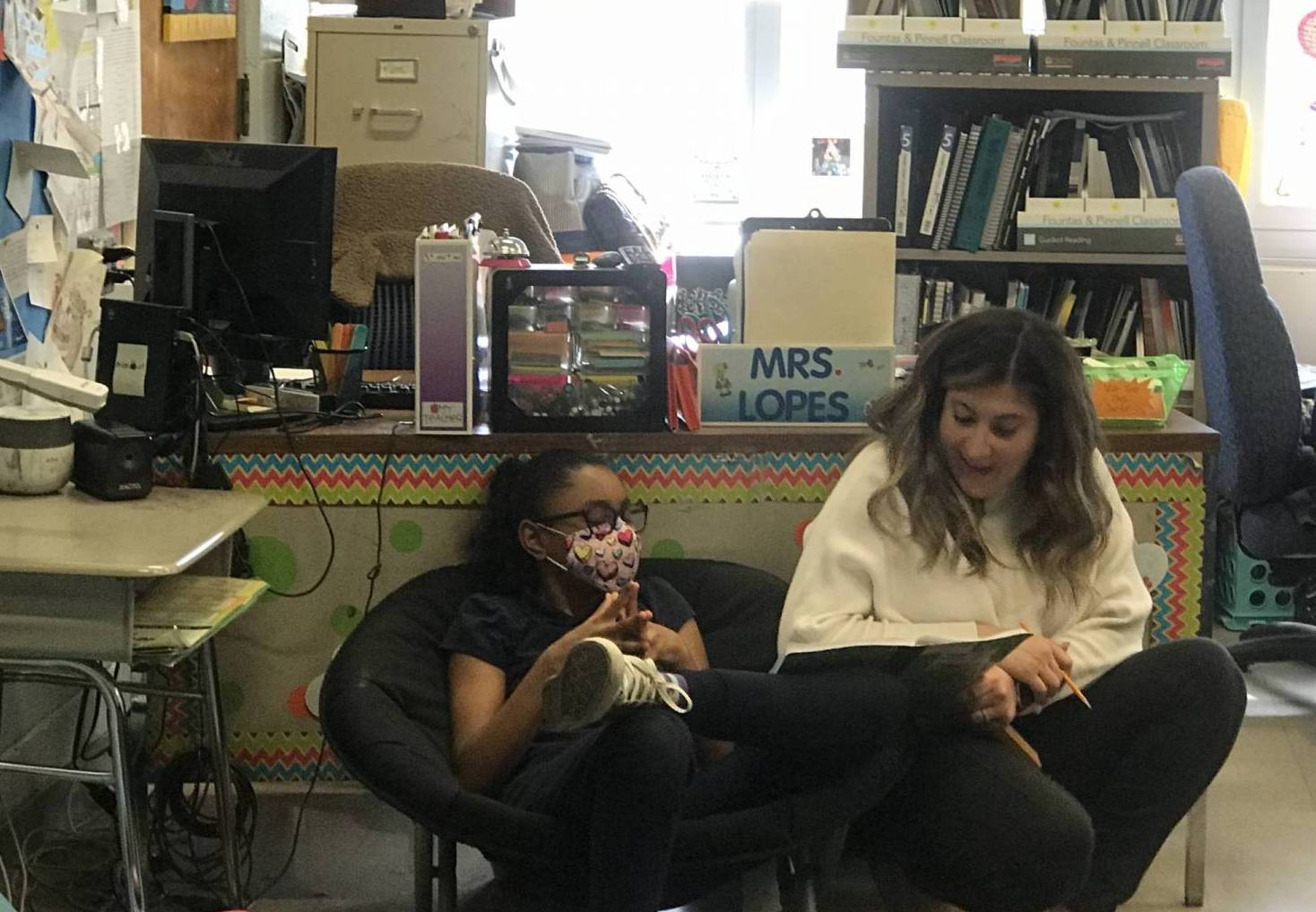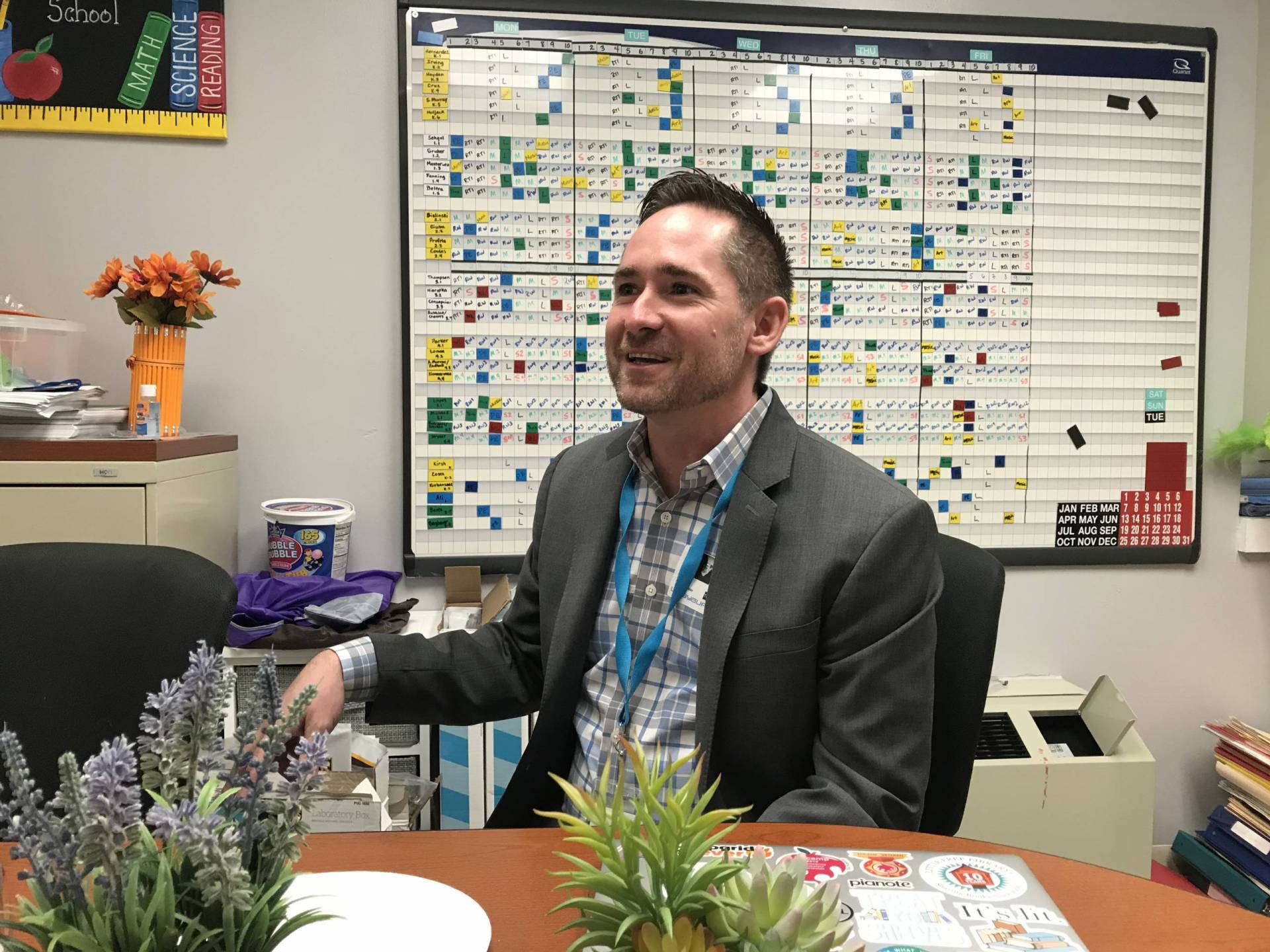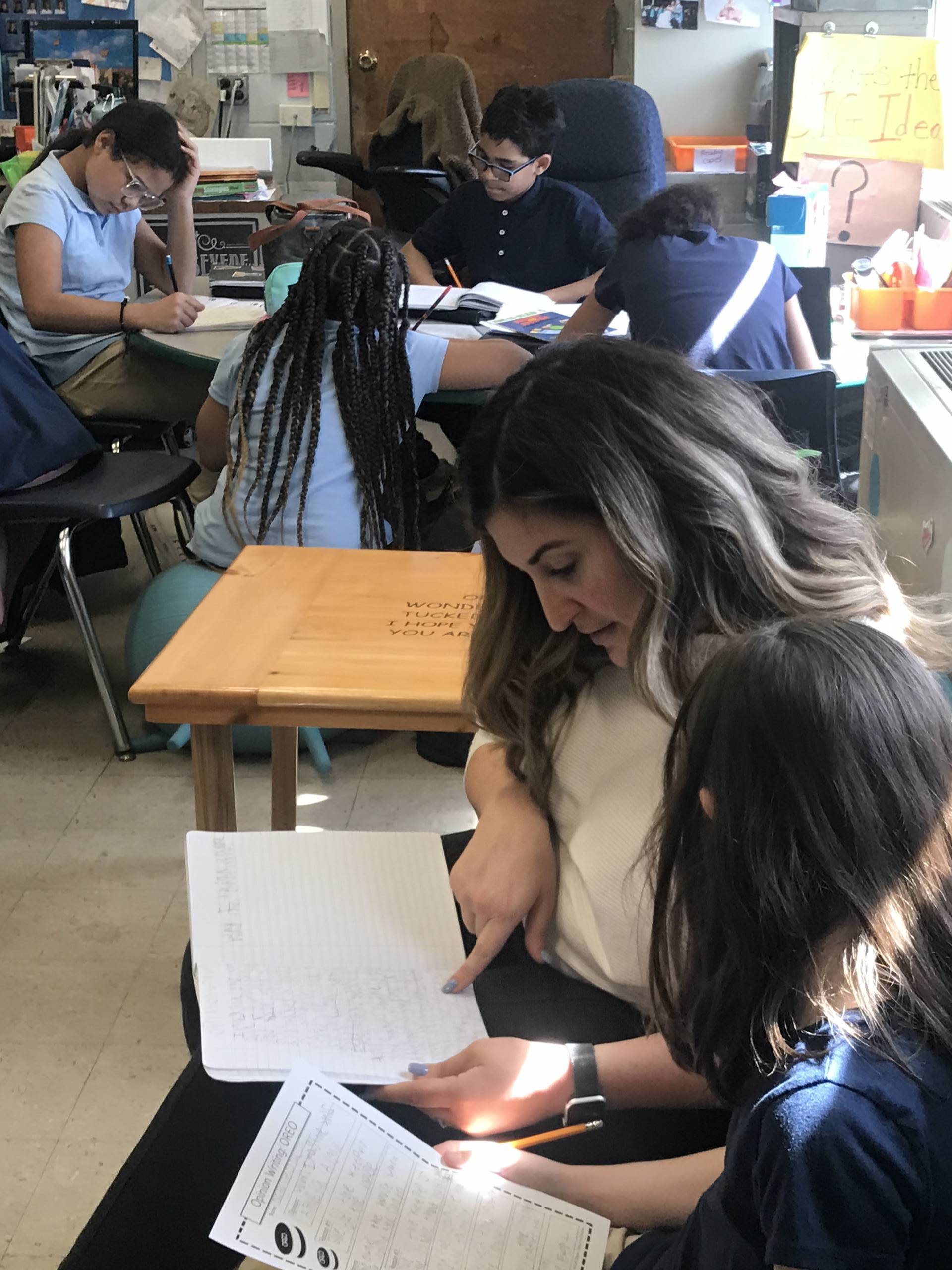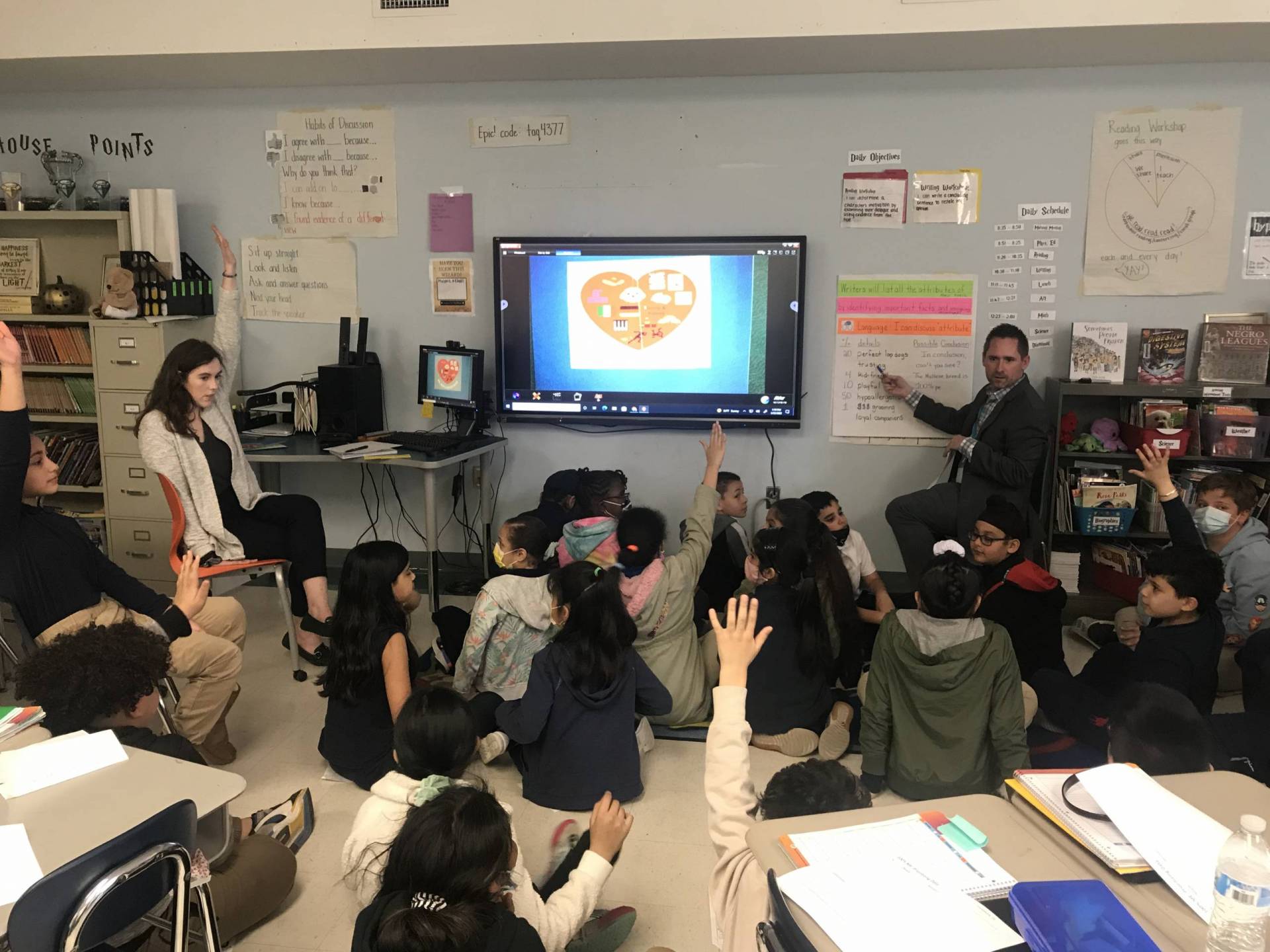Although the federal government sent a massive influx of money to help schools troubleshoot, it left districts to grapple with how best to use the funds. Some are turning to tutoring (which, if done well, can be effective), while others are expanding after school programs. But, some experts say, schools should also invest in deeper changes that tackle the root of the problem: Many teachers aren’t well versed in the science of reading and the best ways to teach to the widening range of abilities they are seeing in students.

Researchers largely agree schools should be training — and retraining — teachers and adopting curricula that embrace evidenced-based strategies. Relevant content that gets kids excited about reading is also important, as is testing. Frequent assessments can identify kids who are behind and make sure educators target resources and deliver interventions during the school day to the kids who most need help.
Gaps in reading can be closed, but it requires transformative change in the classroom — not just heaping on more programs, said Maria Murray, president and chief executive officer of The Reading League, a nonprofit, literacy organization based in Syracuse, New York. Teachers need training on the science of reading research, guidance on leveraging data and ongoing support to help them target instruction.
“Too often, it’s just an additive model with little to no attention to core classroom instruction and the knowledge that the teachers possess to enact very successful instruction with a good curriculum,” Murray said.
The Carteret Public School District, in a diverse area of northern New Jersey, cobbled together several strategies at Columbus, which enrolls nearly 700 students, about 75 percent of whom are economically disadvantaged, according to district administrators. The school uses a variety of practices based in reading science, including a phonics-based program, known as Systematic Instruction in Phonological Awareness, Phonics, and Sight Words (SIPPS), for regular classroom instruction, along with the Orton-Gillingham Approach for students in need of the most support.
After every 10 reading lessons with SIPPS, students take a short assessment to see if they understand the material or need to be retaught. Three times each year they take an i-Ready test, a diagnostic exam administered by the national company, Curriculum Associates, to determine growth and guide instruction.
“We use the data to inform our instruction, because that is the only way that you’re providing students with exactly what they need,” said Columbus Principal Mayling Cardenas.
In addition to implementing the phonics instruction in the 2018-19 school year, the school also switched to a homegrown reader’s workshop model and then added the writing component this year. To make sure the content is exciting and relevant to kids, classroom libraries are stocked with culturally relevant books that represent Columbus’ diversity (the principal reported that 38 percent of students are Hispanic, 27 percent are Black, 17 percent are Asian, and 12 percent are white).
All of this change has required training and ongoing coaching for teachers, which is offered during the day, after school (teachers receive monetary incentives to stay late) and online. More teachers were trained in Orton-Gillingham this year to keep up with the demand. On top of this, the school used federal funds to hire new staff: an additional intervention teacher and part time ESL teacher.
Assistant Superintendent Melissa Jones said her district has looked closely at the research, and then put “a lot of faith in our staff and our teachers.”
“In order to see progress, you have to grow them [professionally],” she said.

Ken Kunz, a literacy coach contracted with the district, is regularly at the school to observe instruction and provide model lessons. Kunz, who is also founder of the nonprofit For the Love of Literacy, said he built rapport with teachers, so they feel empowered and are comfortable giving him feedback.
“Regardless of who they are, or what age, everyone needs help these days,” said Kunz. “And everyone’s appreciative of it, as long as it’s nonevaluative and it’s seen as looking at their strengths first.”
First grade teacher Dawn Gruber said she learned “tips and tricks” from Kunz and other coaches as she rolled out the new curricula. During Gruber’s one-hour morning reading block, students are divided into three groups as part of a teaching model known as “response-to-intervention” or RTI, in which student progress is closely tracked. Students performing at the lowest levels are pulled out of class for intensive phonics intervention, while Gruber uses SIPPS with the rest, usually dividing them into smaller groups based on their reading levels. Her lessons involve decoding, choral reading and lots of repetition.
At one point, Gruber has the small group she’s leading write down what they hear. “Number one: Listening to the sounds, Shh—aah—ck. Shock.” Excellent, good job. Number two: Them. Th—eh—mm.”
In another part of the room, Brooke Tepper, a special education resource teacher, conducts a “readers’ theater” to build reading fluency with four other students. She hands out parts for the crow, fox and two narrators for the kids to read aloud — an activity that was hard to do virtually, because kids would have to mute and unmute as they read their parts. The remaining first graders read independently or use computers to do lessons recommended for their level by the i-Ready program.
Second grade teacher Jill Bielinski said the new approach to literacy is much different than when everyone was handed the same textbook to read. “You really couldn’t see who was progressing, who really understood the text. Some students just memorized. We didn’t have good intervention for the students who were struggling,” said Bielinski, who has been at Columbus for 25 years. “It has changed so much for the better.”

Early literacy instruction was hurt so much by the pandemic that schools need to think beyond recovery, said Susan Lambert, chief academic officer of elementary humanities at Amplify Education Inc. The Brooklyn-based company, which publishes curriculum and assessment programs, works with more than 4,000 school districts in the U.S.
The moment, she said, calls for a systemic effort that emphasizes solid core instruction and uses data to target research-based support for kids most at risk.
“It’s not just learning loss. You can’t hold on to anything you haven’t learned before. It’s really like they missed instruction,” said Lambert.
In February, a report by Amplify, analyzing data of 400,000 students in 37 states, indicated more students were at risk of not learning to read than before the pandemic; children in elementary grades and Black and Hispanic students were disproportionally impacted. The good news in Amplify’s recent survey, said Lambert, is that face-to-face instruction helped kids improve.
But reading performance is still behind where it was pre-pandemic — when reading scores were already dropping.
Last year, administrators in the Lubbock Independent School District in Texas took a deep dive to find the most effective way to improve reading. A 50-member literacy committee met for nine months to study the science of reading before recommending the new curriculum, said Misty Rieber, assistant superintendent for curriculum and instruction for the district of about 26,000 students.
The district adopted the Texas Amplify Early Literacy Program, which includes a scripted curriculum based in the science of reading alongside interesting books to help students build background knowledge and vocabulary. The program, launched in a few schools this year, was adapted to meet state requirements. district also trained educators how to teach foundational skills and use rich content.
If the core instruction is bad, Rieber said, “You can’t intervene your way out of it.” The aim of the new effort is to reduce the need for intervention, while using frequent screening to make sure extra help is provided when data shows it’s needed.
Coming back from remote instruction, many of the 575 students at Hardwick Elementary School in Lubbock were lagging in reading, said Principal Kim Callison. Four classes are trying Amplify’s program, which emphasizes whole group instruction and uses diagnostic assessments to identify who needs additional help.
“It has changed significantly the enthusiasm and the excitement for reading in our school,” said Callison, where about 79 percent of students there are economically disadvantaged and the majority are Hispanic. The school also added interventionists who are using data to provide more intensive instruction for the lowest-performing students during the day.
Third grade teacher Nikki Hill said she was worried at first whether struggling students would be able to keep up with the more rigorous, faster-paced curriculum. But the lessons have enticing hooks, she said, and small groups can be pulled as needed to review material. “The biggest difference is their engagement,” said Hill, who added some students were asking to stay in from recess to keep reading a book. “They talk about what they are reading and that’s been a huge piece to give it a new glow. It’s boosted them to see it’s fun again.”
Next year, Amplify will be rolled out throughout the district in Lubbock, officials said.

While it’s too early to tell if many of the efforts spurred by the pandemic are working, districts that tackled reading problems before the pandemic suggest the all-in approach can make a real — and rapid — impact.
About seven years ago, Lyncourt School in Syracuse reached out to the experts at The Reading League looking for ways to turn around reading performance. The experts told them they should “get to the heart of the science of reading,” said Kimberly Davis, principal of the Pre-K to grade 8 school. Educators underwent a year of professional development, and then searched for a curriculum that aligned with their new understanding.
Lyncourt’s administrators selected Amplify’s Core Knowledge Language Arts program because it incorporated the “Scarborough’s rope model” of reading, which weaves together word recognition and language comprehension strands, said Amy Rotundo, data coordinator at the school. The Amplify program’s emphasis on building language through rich vocabulary and content knowledge was suited for the school’s 400 students, about 70 percent of whom are disadvantaged, according to school administrators.
The Reading League has provided ongoing coaching to teachers, while testing at the beginning of the year identifies students in need of extra help. Reading intervention specialists meet with teachers to decide what kind of support they prefer —co-teaching in the classroom or small group pull-out instruction — said Diane Sheffield, a reading intervention specialist at Lyncourt. The majority of extra support takes place during the day and complements the core instruction happening in the classroom.
In 2017, according to district data, 44 percent of Lyncourt students in grades 2-6 were at or above grade level expectations on the school’s screening test. In 2019, 70 percent were on grade level, said Rotundo.
The improvement was impressive, but Rotundo said improving student reading takes a long-term investment and buy-in from administrators, teachers and paraprofessionals. “Right now, with the pandemic, everyone’s in a panic to find a magic wand to fix everything,” she said. “That’s not how you make long lasting, sustainable change. It takes a lot of years of hard work. Throwing money on a program isn’t going to fix Covid gaps.”
Rob Tierney, president of the International Literacy Association, said that rather than a single, best method, teachers need to learn to make discerning decisions and equip themselves with a “repertoire of strategies” to customize instruction based on an assessment of different kids’ needs.
“There is one recurring finding [in literacy research] that has gone on for 50 years: The most important thing in teaching reading is the teacher,” said Tierney.
At Columbus, Bielinski, the second grade teacher, said it’s taken “a lot of time for teachers to get used to all this change.” But, she added, the work has been worth it.
“The students don’t know,” she said. “The students only know that they are being helped.”
On a recent day, her second graders gathered on the carpet to hear her read “Where Does Garbage Go?” She asked questions and then instructed students to turn to a partner to discuss. Afterwards, the children chose what to read from bins carefully curated with books at their level.
Bielinski carried a clipboard with stack of data sheets as she moved from desk to desk to listen to her students read. She checked to see if they skipped words or relied on the pictures, a strategy that still features prominently in some reading programs and that can confuse struggling readers. She occasionally asked students questions, to see if they comprehended the material.
“I write little notes that help me understand them better as a reader,” said Bielinski.
The i-Ready Assessment at Columbus shows improvements in on grade-level reading from the fall of 2021 to the winter of 2022, said Cardenas, the school’s principal. Every grade saw jumps, but the youngest readers improved fastest: First graders advanced from 9 percent on grade level to 22 percent, while second graders advanced from 19 percent to 33 percent. Kindergarteners were not tested in the fall, but 50 percent were on grade level for reading in the winter of 2022.
“We still always have a lot of work to do,” said Cardenas, “but our students are growing.”

